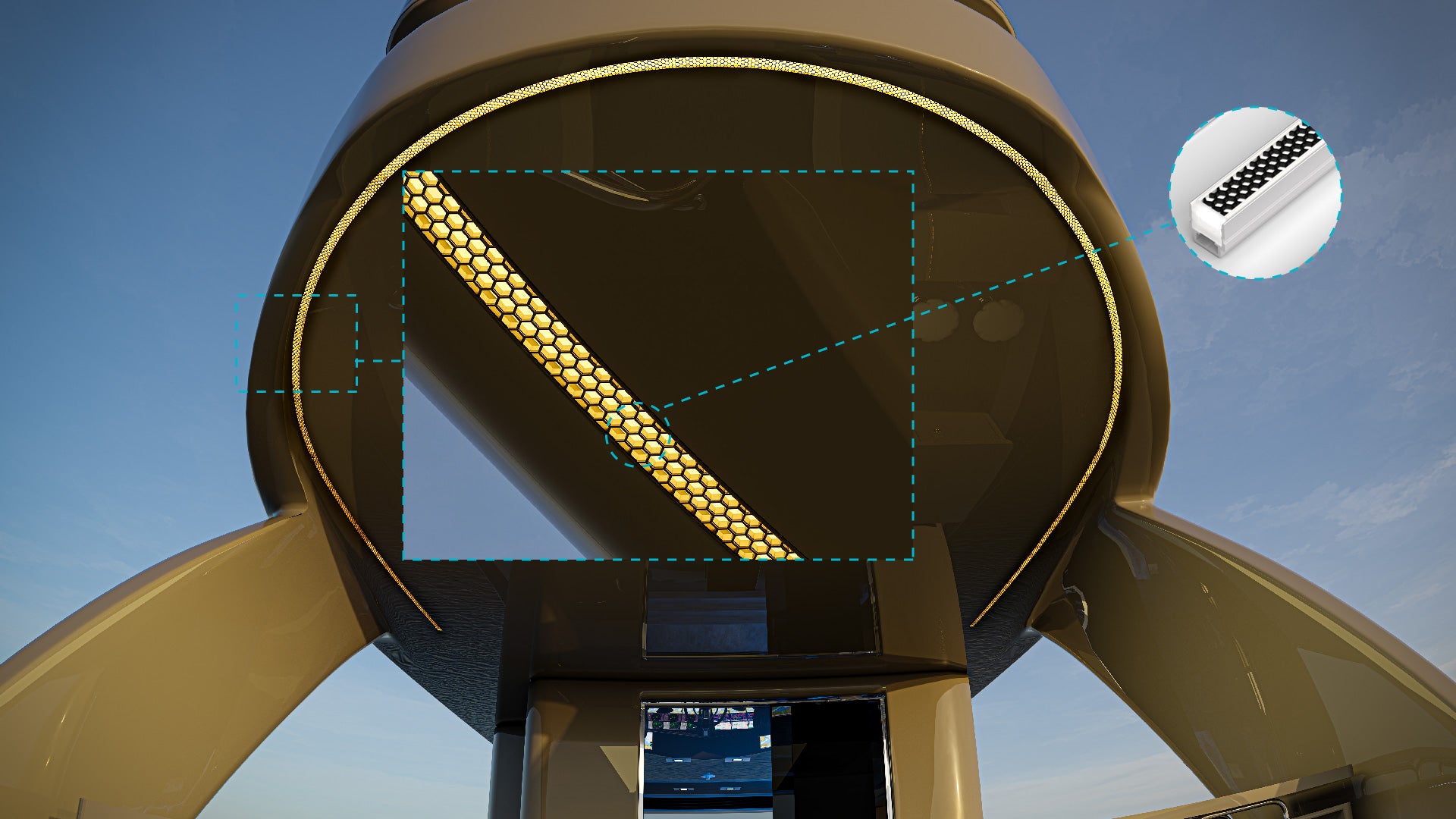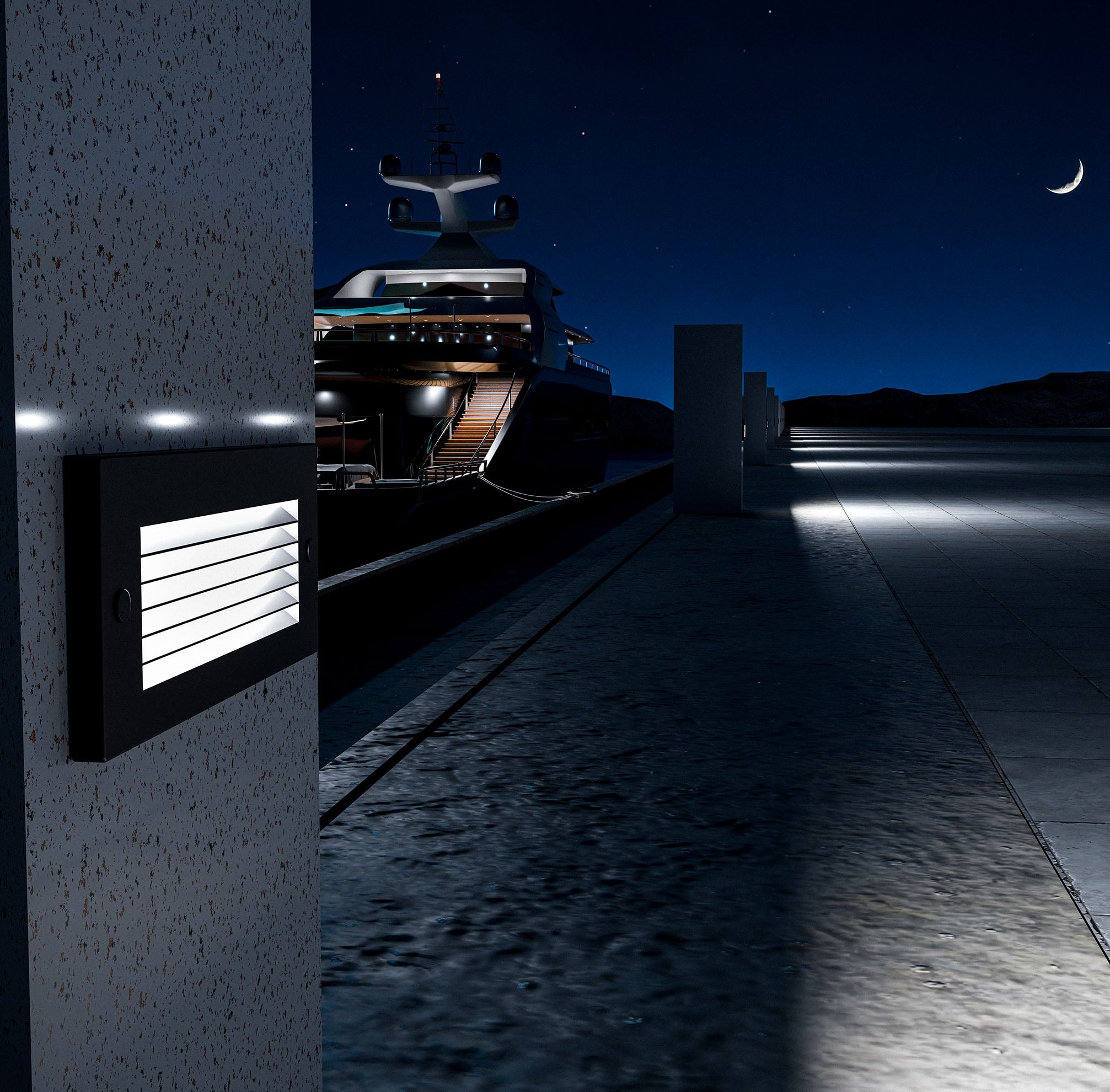Color temperature is a key factor when selecting marine LED lighting, affecting both the functionality and ambiance of your boat. Whether you're illuminating the helm for clear visibility during night navigation or creating a relaxing atmosphere in the cabin, choosing the right color temperature can significantly enhance your experience on the water. Color temperature is measured on the Kelvin (K) scale, ranging from warm, yellowish light to cool, bluish light. Understanding how to use different color temperatures for various areas of your boat can help you achieve the perfect balance between aesthetics, comfort, and functionality.
In this guide, we’ll explore the Kelvin scale, explain how color temperature affects perception and mood, and offer detailed advice on how to choose the right lighting for every part of your boat.
Understanding the Kelvin Scale and Color Temperature
What is Color Temperature?
Color temperature refers to the warmth or coolness of light and is measured in Kelvins (K). The lower the Kelvin number, the warmer and more yellow the light appears, while higher Kelvin numbers produce cooler, bluer light. For example, lights at 2700K emit a warm, soft yellowish glow, which is similar to traditional incandescent lighting. On the other hand, lights at 5000K or above produce a cool, bright white light with a blueish tint, closer to daylight.
- Warm White (2700K-3000K): These lights produce a soft, cozy glow that is ideal for creating a relaxing, inviting atmosphere. Warm white light is often used in living spaces or areas where comfort is a priority.
- Neutral White (3500K-4000K): Neutral white light offers a balance between warm and cool, providing good visibility without being overly harsh. This color temperature is perfect for workspaces or task areas like kitchens and galleys.
- Cool White (5000K-6500K): Cool white light is closer to daylight, offering clear, bright illumination that enhances visibility. It’s ideal for areas where focus and clarity are essential, such as the helm, cockpit, or exterior lighting.
How Color Temperature Affects Perception
The color temperature of your lighting has a significant impact on how you perceive the space around you. Warmer light (2700K-3000K) tends to make spaces feel cozy and intimate, which is why it’s commonly used in living rooms, bedrooms, and lounges. Cooler light (5000K+), on the other hand, creates a more clinical, focused atmosphere, making it ideal for task lighting or outdoor applications where you need maximum visibility. Understanding how color temperature affects perception allows you to create the right ambiance for different areas of your boat, whether it’s a relaxed evening in the cabin or ensuring clear sightlines on the deck during night navigation.
The Importance of Choosing the Right Color Temperature for Marine LED Lighting
Functionality and Visibility
One of the main considerations when choosing the color temperature of marine LED lights is functionality. Areas of your boat that require focused lighting, such as the helm, cockpit, or engine room, benefit from cooler color temperatures (4000K-5000K). This cooler light enhances visibility, reducing eye strain and allowing you to see details more clearly. For example, when you’re navigating at night, cool white LED lights on the deck or helm ensure you can see instruments, maps, and the surrounding environment with precision.
On the other hand, relaxation areas, such as the cabin or living quarters, are better suited to warmer light (2700K-3000K). Warm lighting creates a softer, more comfortable ambiance, which helps you unwind after a day on the water. By choosing the right color temperature for each area of your boat, you can ensure that your lighting is functional while also providing the appropriate mood for different activities.
Aesthetic and Ambiance
Beyond functionality, color temperature also plays a vital role in setting the mood and aesthetic of your boat. Warm lights are perfect for creating a cozy, inviting atmosphere in interior spaces like the cabin or dining areas, while cooler lights can make spaces feel modern and crisp. Using cooler, brighter lights in workspaces and warmer lights in living spaces can create visual contrast, helping to define different areas of the boat and improve the overall experience for guests and crew.
For outdoor lighting, cooler color temperatures are often used to provide clean, sharp illumination. This is particularly useful for accentuating the sleek design of your boat’s exterior or for showcasing specific architectural elements, like railings or masts, after dark.
Choosing the Right Color Temperature for Different Areas of the Boat
Deck and Exterior Lighting
When lighting the exterior of your boat, particularly the deck, it's important to prioritize visibility and safety. For this reason, cooler color temperatures (4000K-5000K) are ideal for deck lighting, as they provide bright, clear light that enhances visibility during nighttime navigation, docking, or when working on deck. Cool white lights also help illuminate obstacles or equipment, reducing the risk of accidents. Additionally, solar-powered LED lights in cool white tones are a great option for eco-friendly deck lighting, ensuring that the lights automatically turn on at dusk without drawing power from the boat’s electrical system.
Cabins and Interior Spaces
For cabins, bedrooms, and interior lounging areas, warm white LED lights (2700K-3000K) are the best choice. These lights create a comfortable, relaxing environment, perfect for winding down after a long day at sea. Warm lighting is gentle on the eyes and enhances the cozy feel of your living quarters, making the space feel more like home. For nighttime reading or ambient lighting, dimmable warm LED lights offer flexibility, allowing you to adjust the brightness to suit your needs.
Work Areas and Engine Rooms
In workspaces like the helm, engine room, or galley, you need bright, focused light to ensure clear visibility. Cool white LED lights (5000K+) are perfect for these areas, as they replicate daylight and help improve concentration. Whether you’re working on mechanical repairs in the engine room or navigating through low-light conditions, the crisp light from cool white LEDs helps you see details more clearly and improves overall safety. Neutral white lights (3500K-4000K) can also be used in areas like the galley, where you need a balance of warmth and visibility.
Accent and Mood Lighting
For accent lighting, such as lighting around staircases, under seating areas, or highlighting architectural details, color-changing LED lights can add a dynamic touch to your boat’s interior. Adjustable color temperature options allow you to switch between warm and cool tones, depending on the mood you want to create. Dimmable LEDs are also great for mood lighting, providing flexibility to adjust the intensity and color warmth throughout the day.
Practical Considerations for Choosing Color Temperature
Personal Preference and Usage
While technical guidelines can help you select the appropriate color temperature for different areas of your boat, personal preference also plays an important role. If you prefer a more modern, sleek aesthetic, you may opt for cooler tones (5000K+), while those seeking a traditional or homey feel may lean toward warmer tones (2700K-3000K). Think about how you use each area of your boat—whether for relaxation, working, or entertaining—and choose lighting that complements those activities. A mix of warm and cool lighting throughout your boat can provide the perfect balance between functionality and ambiance.
Adjustable and Dimmable LED Lighting
For greater flexibility, consider investing in adjustable or dimmable LED lighting systems. Many marine-grade LED lights come with adjustable color temperature settings, allowing you to switch between cool and warm tones depending on the situation. For example, during the day, you might prefer cool lighting for better visibility, but in the evening, you can switch to warmer tones for a more relaxed atmosphere. Dimmable lights are particularly useful in cabins and living spaces, where you may want softer lighting at night and brighter lighting during the day.
Energy Efficiency and Longevity
Regardless of the color temperature you choose, LED lighting offers significant energy savings compared to traditional incandescent bulbs. Marine LED lights consume far less power, which helps reduce the load on your boat’s battery. They also have a longer lifespan, meaning fewer replacements and lower maintenance costs over time. Whether you opt for warm or cool lighting, you’ll benefit from the energy efficiency and durability that LED technology provides.
Common Mistakes to Avoid When Selecting Color Temperature
Choosing Too Cool for Relaxation Areas
One common mistake boat owners make is selecting lighting that is too cool for areas meant for relaxation, such as cabins or sleeping quarters. Cool white light (5000K+) can feel harsh and clinical, making it less conducive to relaxation. In spaces where comfort is a priority, it’s best to stick to warm white lighting (2700K-3000K) to create a softer, more inviting atmosphere.
Inconsistent Lighting Across the Boat
Another mistake is mixing too many different color temperatures in close proximity, leading to a disjointed, inconsistent look. While it’s important to use different lighting for different functions (e.g., warm lights in the cabin, cool lights on deck), avoid placing drastically different temperatures next to each other. This can create visual discord and make the boat feel fragmented. A good rule of thumb is to transition gradually between color temperatures, maintaining consistency within each zone.
Overlooking Dimmable Options
Failing to install dimmable lights is another common oversight. Dimmable LED lights allow you to adjust brightness levels depending on the time of day or activity, offering flexibility and energy savings. In areas like cabins or living rooms, dimming options provide the ability to switch from bright task lighting to soft, ambient lighting as needed. Not having this flexibility can limit your ability to create the ideal lighting environment on your boat.
Choosing the right color temperature for your marine LED lighting is essential to creating a functional and inviting environment on your boat. By understanding the Kelvin scale and considering how color temperature affects visibility, mood, and ambiance, you can select lighting that enhances both the practicality and aesthetic appeal of your vessel. From cool, bright lights for safety and navigation to warm, cozy lighting for relaxation, marine-grade LED lights offer a wide range of options to suit every need.
Explore K2 Lighting’s collection of marine-grade LED lights, designed with customizable color temperature options to meet the demands of your boat’s lighting needs.





